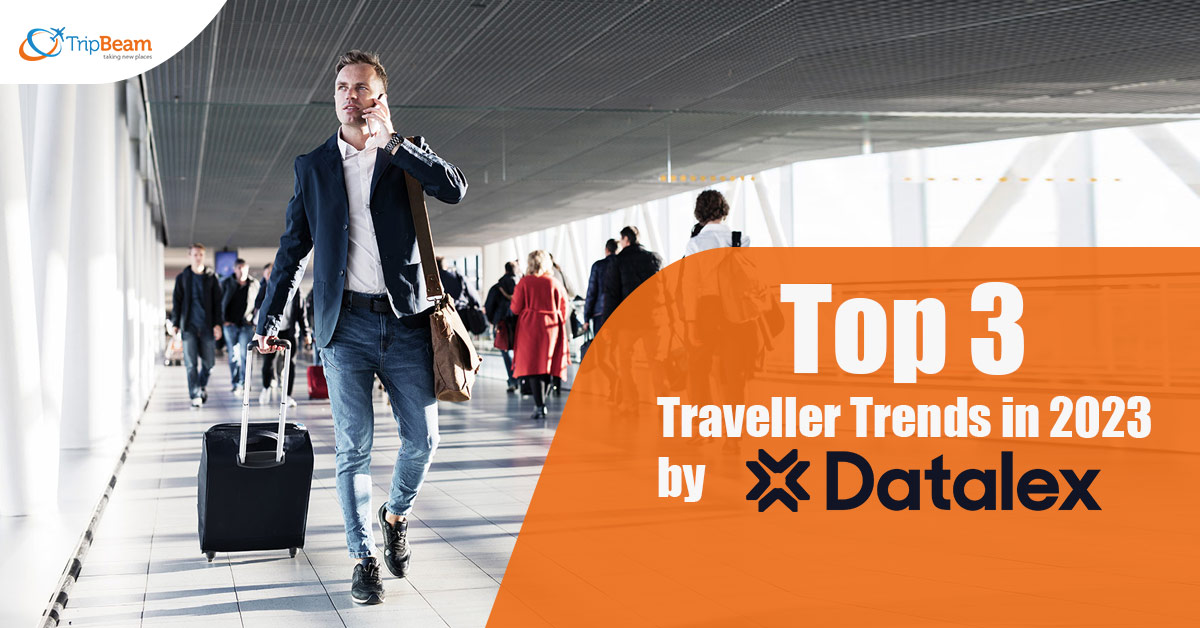

Introduction
For the travel industry, 2022 turned quite a great year post-pandemic. This year showed a cumulative return to normal things after a very challenging period of almost two years. As a result, by the end of the year, the ratio of air travelers became normal like it used to be in 2019 prior to Covid. For instance, according to Eurocontrol, the European air traveler traffic pre-pandemic levels were 91%. This was good progress despite the fact that the year was impacted by inflation, the cost-of-living crisis, dire geopolitical issues, and continued restrictions on the Asian market.
By ignoring these odds, Datalex sanctioned comprehensive research in November 2022. His report was formed from a global survey of 150+ senior crew of airlines including 50+ airline CEOs along with 10,000 global travelers approximately. The latest Datalex analysis reveals that key traveler trends are reshaping airline thinking. These trends denote a broader shift toward greater control, freedom, and autonomy in regard to distribution and technology within the aviation organization.
Air travelers acknowledge and understand a gap that exists between airlines and their e-commerce counterparts. However, the aviation industry is not yet as conscious of the disparity. The reports of Datalex reveal that airline executives grossly underestimate the reality behind the actual gap between airlines and other industries. On the other hand, 37% of travelers state that airlines are the cause of the gap. However, almost 25% of airlines assume the aviation sector is ahead.
Read More: Here are some exciting travel trends to look out for in 2023
Most air travelers look for clear communication and transparent airfare or travel deal offers that align with ancillaries to add to their flight bookings. While 70% of travelers prefer to buy combo products or deals (multiple products or services clubbed together as 1 deal). Both parties, airlines, and customers get the benefits of bundled deals. So similar deals (combo offer deals) attract more air travelers. As customers feel their experience gets better and more seamless. While airlines get more profit by accessing a bigger share of the customer’s wallet.
A future-oriented technology environment that is the cornerstone of a unified offer-and-order future is far closer than we realize. Strong desire to leave the PSS sooner rather than later; within the next 1-2 years. While this schedule is ambitious, it indicates a clear and very strong desire to begin this change in order to accommodate a new age of airline commerce.
Read More: SSSS Tag On Boarding Pass – Everything You Need To Know
Tell us more details to help better






| Sun | Mon | Tue | Wed | Thu | Fri | Sat |
|---|---|---|---|---|---|---|
30 | 31 | 1 | 2 | 3 | 4 | 5 |
6 | 7 | 8 | 9 | 10 | 11 | 12 |
13 | 14 | 15 | 16 | 17 | 18 | 19 |
20 | 21 | 22 | 23 | 24 | 25 | 26 |
27 | 28 | 29 | 30 | 1 | 2 | 3 |
| Sun | Mon | Tue | Wed | Thu | Fri | Sat |
|---|---|---|---|---|---|---|
30 | 31 | 1 | 2 | 3 | 4 | 5 |
6 | 7 | 8 | 9 | 10 | 11 | 12 |
13 | 14 | 15 | 16 | 17 | 18 | 19 |
20 | 21 | 22 | 23 | 24 | 25 | 26 |
27 | 28 | 29 | 30 | 1 | 2 | 3 |